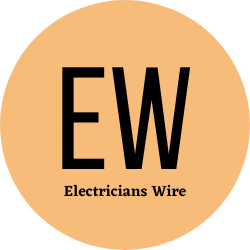Selecting the Best Solar Panel for Your Home
by siteadmin

Solar panels come in a variety of shapes, sizes, and costs. Choosing the right solar panel is important to ensure that it meets your needs. In this article, we will look at the Monocrystalline, Thin-film, Standalone, and Cost factors. Once you understand these factors, you will be ready to purchase a solar panel for your home.
Monocrystalline solar panels are the most efficient solar panels on the market. Their single-crystal structure results in a flat, continuous color. These panels have the highest efficiency, power capacity, and lifespan compared to other solar panels. Monocrystalline solar cells also feature an aesthetic look and feel. This makes them a popular choice for solar panels.
Monocrystalline solar panels are less expensive than polycrystalline panels. A standard 250-watt monocrystalline panel can cost between $250 and $375. Monocrystalline solar panels have a longer lifespan and are expected to continue producing electricity even if the sun is not shining. Most monocrystalline panels carry a 25-year warranty. The panels also tend to have a uniform color, which is more appealing than polycrystalline panels.
Monocrystalline solar panels are made from pure silicon, unlike polycrystalline panels, which are made by melting multiple fragments together. The advantage of a monocrystalline panel is that it has a high-efficiency rate and is cheaper to purchase. Monocrystalline solar panels are also easier to install than polycrystalline ones. Monocrystalline panels can be installed on any roof or window.
Monocrystalline solar panels are a great choice for low-light regions. The highest quality silicon is used to make them. Because they are more efficient, monocrystalline solar panels produce more power in the same area. Because of this, monocrystalline solar panels are an excellent choice if space is a factor.
Thin-film solar panels are a new generation of solar cells that contain many thin layers of photovoltaic material. Unlike standard silicon cells, they are flexible and efficient. These solar cells are also much lighter and are less affected by environmental conditions, such as heat or shade. However, there are some drawbacks to thin-film solar cells.
One of these drawbacks is their cost. Thin-film solar cells are more expensive than their silicon counterparts. As a result, they require a much larger space to be installed. These panels are typically installed on commercial buildings, streets, large rooftops, and traffic lights. They can also be mounted on large steel water tanks.
Thin-film solar panels can be installed on most types of metal roofs, such as metal shingles and standing seam metal. Unlike crystalline solar panels, thin-film solar panels do not require roof penetrations. This makes them perfect for metal roofing. Additionally, the solar energy they generate is better in cloudy, partially shaded, or low-light conditions. Thin-film solar panels also do not lose efficiency during periods of high heat, which is an advantage over crystalline solar panels.
For those concerned about the environment and who want to save money, thin-film solar panels are a great option. This technology has been around for over four decades and has proven itself to be very effective. The recent fall in solar panel prices is expected to drive the growth of solar PV installations.
Stand-alone solar panels are designed to work independently of the local power grid and have a variety of benefits. A stand-alone system will produce enough power for your home's electrical needs and will not need to be hooked up to a grid. Instead, the energy produced by the solar panels travels through an inverter to a battery bank, which then provides electricity to your home. The battery bank can store enough energy to power multiple large appliances for several days or even an entire month.
Stand-alone solar panels are the most cost-effective and convenient way to produce solar power for your home. These systems can provide a steady source of power for your home, or you can use them to supplement a grid-supplied electricity source. They're also great for off-grid living because they're often affordable and convenient for those living in rural or remote areas.
Stand-alone solar panels can reduce your power bill by a significant amount. The capital costs for such systems vary based on the size of your array and the state where you live. In 2008, a 2-kilowatt grid-tied system cost about $7,000 in Denver and $16,000 in Seattle. These costs include batteries, a charge converter, and installation. In addition to saving money on your power bills, a stand-alone solar system will increase the resale value of your home.
Stand-alone solar panels can also be connected to the local grid. In this case, they will import some of the excess energy that they produce. These systems are often used in remote areas or in mobile applications.
Solar panels come in a variety of shapes, sizes, and costs. Choosing the right solar panel is important to ensure that it meets your needs. In this article, we will look at the Monocrystalline, Thin-film, Standalone, and Cost factors. Once you understand these factors, you will be ready to purchase a solar panel for your…
Recent Posts
- Best Electrician Huntsville: Your Trusted 24/7 Electrician in Huntsville, AL
- Abilene Electricians: Setting the Standard for Excellence in Electrical Services
- Harnessing the Sun: The Rise of Solar Companies in El Paso
- P2 Electrical Contracting LLC Revolutionizes Electrical Solutions
- Best Electrician Huntsville Continues to Shine
